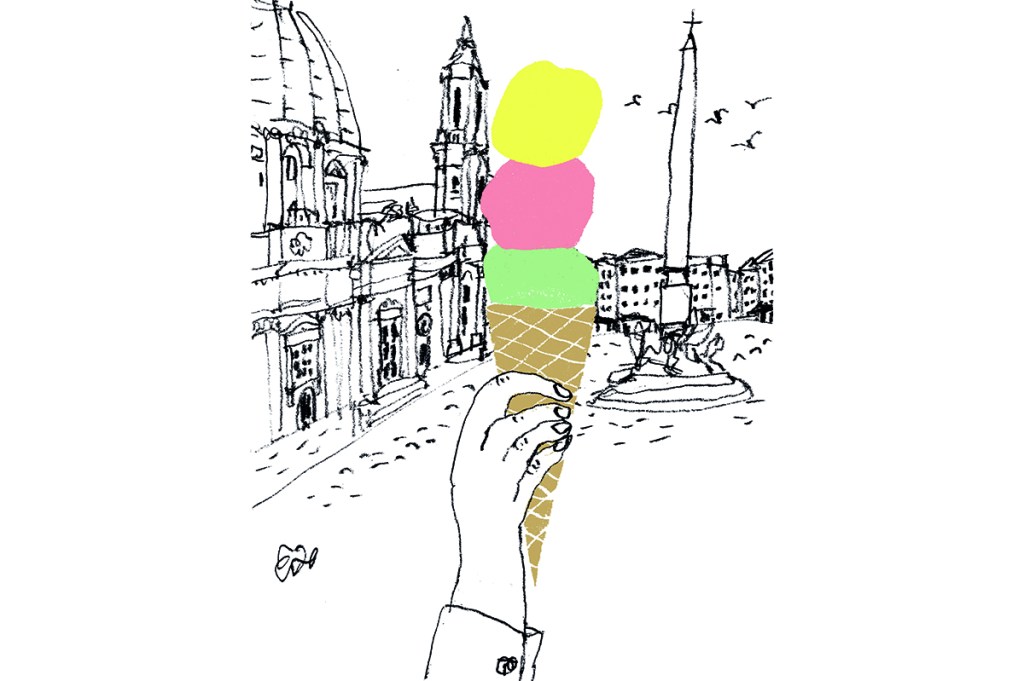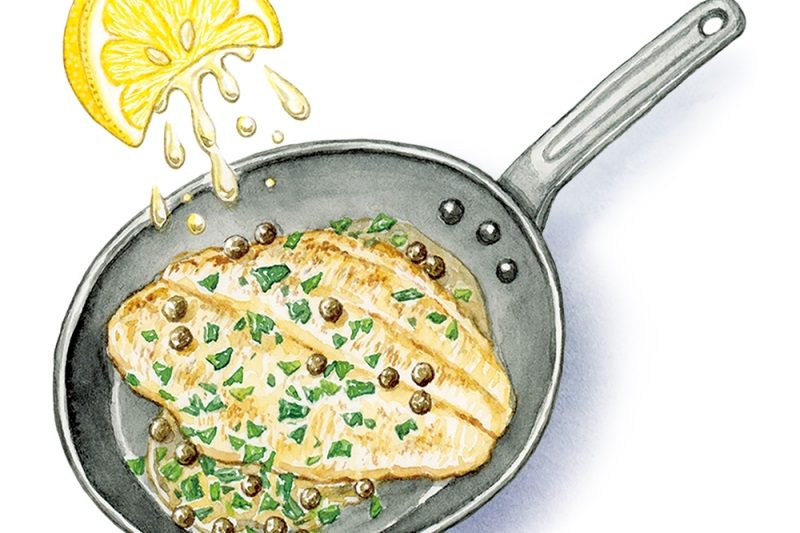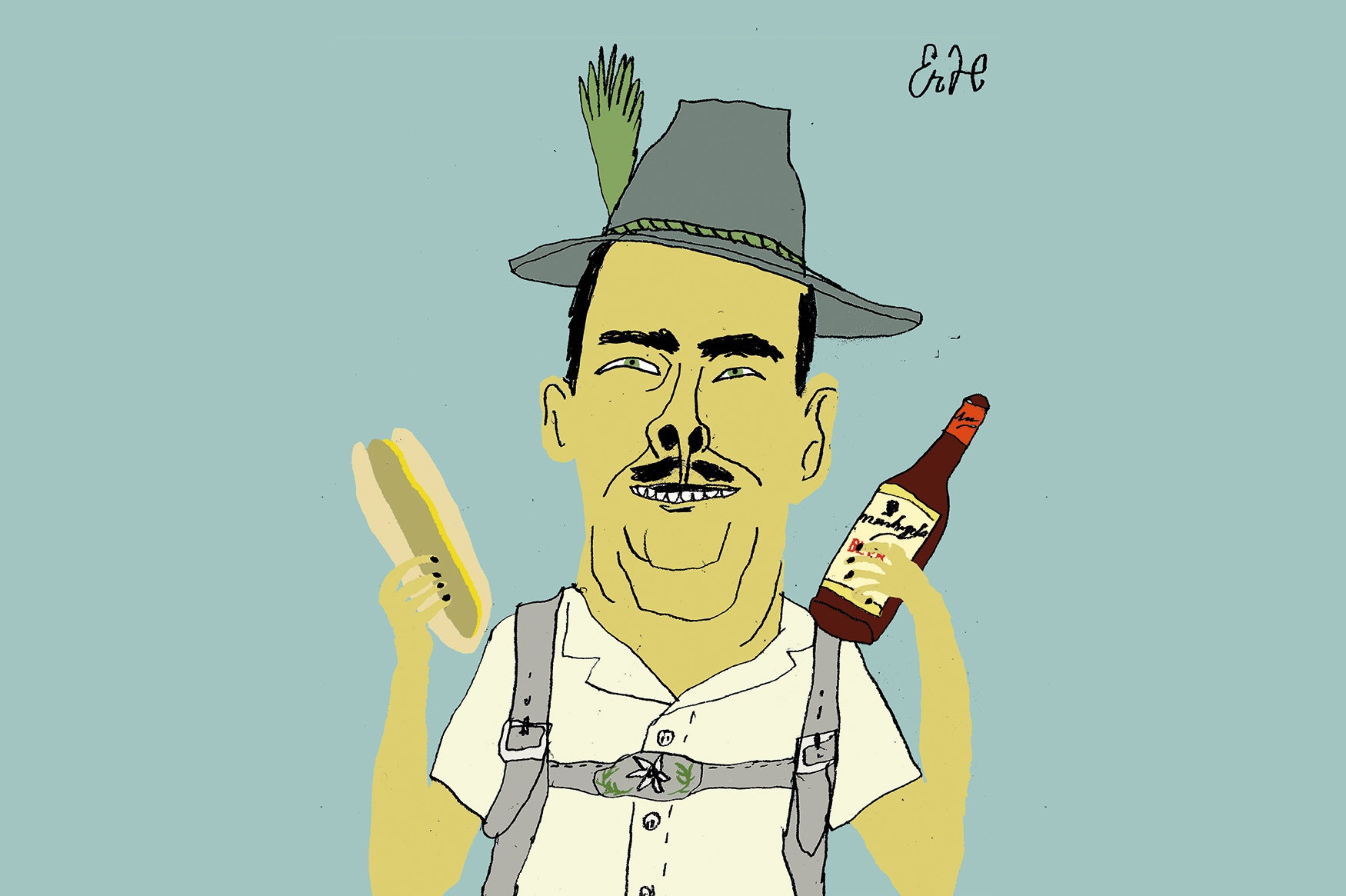“Gelati, sorbetti e granite,” it said on the cover. We were in a little bookshop off the Piazza Duomo in Verona. Days of consuming Italian gelato in the hot afternoons had worked so wonderfully upon our imaginations that here we were purchasing a recipe book in a language we didn’t even understand, trying to capture a little of the magical glitter of the Italian summer before it slipped through our fingers.
I still have the book — and I still don’t understand enough Italian to follow a recipe. But the pictures convey some of the original magic. Gelato al limone peers creamily out of a yellow bowl, garnished with bristling strips of lemon peel. Gelato allo Champagne is pink and melting, snuggled up to a strawberry. Sorbetto d’arancia is spooned into a hollowed-out orange. As I turn the pages, I catch a bright flash of oleander out of the corner of my eye and feel the luxurious marble streets of Verona under my sandals, radiating warmth from the day’s sun.
The story goes that the explorer Marco Polo learned about ice-cream making in China and brought the technique back to Italy with him. Frozen desserts had already existed much closer to home, of course: the Egyptian pharaohs reportedly served their guests ice shavings with fruit juice, and the early Romans collected snow and ice from the upper slopes of Mounts Etna and Vesuvius and mixed them with honey.
But that wasn’t ice cream. Making sweetened dairy into frozen desserts was a different ball game, because milk or cream mixed with sugar freezes at a lower temperature than water. The Chinese had figured out how to immerse pots of sweetened milk in a combination of snow (or possibly ice) and salt. The icy brine was colder than 32°F, a point at which the sweetened dairy mixture could freeze.
This is the basic principle behind the old-fashioned hand-cranked ice-cream churns you might have sitting around in your attic or see in old junk shops. A thin metal drum containing the ice-cream mixture sits inside an outer barrel into which ice and salt is poured.
What later centuries (was it the Italians, the French or the English?) brought to the process was the churning or beating, which incorporates air into the ice cream as it freezes, making a fluffy, smooth texture. Before the era of electrical home appliances, this was carried out mostly thanks to elbow grease.
There’s a scene in Eugenio Corti’s Italian war epic The Red Horse in which the book’s hero, the young writer Tintori, is invited to visit an old schoolmate’s family near Milan for gelato. World War Two has already broken out, and Tintori is soon to be ordered to the eastern front. In the meantime, it’s an idyllic Sunday afternoon; the adults sit under a pergola in the flower-laden garden as the younger ones wrestle with the hand-cranked ice-cream maker. Despite their best efforts, the gelato refuses to freeze. Lively argument ensues as to the cause. In the end the machine is abandoned, still full of milky slurry. Someone runs to the bakery for a torta paesana instead, which they supplement with white wine and cigarettes. As Tintori leaves, they invite him back warmly: next Sunday, they promise, the ice cream will freeze! But next Sunday Tintori is on his way to Russia.
In those days you could churn for hours and have nothing but a stubbornly liquid base to show for your efforts. Nowadays, with the benefit of modern appliances, home chefs have it easier. At worst, if your ice cream refuses to freeze, you haven’t stood sweating over it for an hour. And at best it’s quite easy to produce something respectable.
Choosing — and sticking to! — a reliable recipe is an important first step. It’s easy to decide that you’ll change the quantity of sugar or replace one ingredient with another, but ice cream demands a delicate chemical balance. The right amount of sugar will keep the ice cream soft and scoopable; too little puts the mixture at risk of freezing to an excessively hard consistency. The right number of solid flavorings also helps keep the ice crystals small — large crystals make for an unpleasant texture and a watery taste.
One of the most successful ice creams I’ve made was New York foodie Max Falkowitz’s “The Best Strawberry Ice Cream Recipe.” Strawberry ice cream presents its own peculiar challenges because, as Falkowitz points out, you want the ice cream really to taste like strawberries. But if you put chunks of fresh strawberry in, they freeze into tasteless and unpleasant chunks of ice. And if you cook the strawberries into a jam, as many recipes do, their delicate yet zippy flavor is wrecked.
I decided to try Falkowitz’s recipe after visiting a pick-your-own berry farm and returning laden with fragrant, sun-ripened strawberries. This is the best way to source strawberries for ice cream. Unlike other fruits, strawberries stop ripening as soon as they are picked. But for bulk commercial purposes, strawberries can’t be picked at peak ripeness or they will spoil before they can be sold. So most strawberries in large grocery stores are slightly underripe, devoid of the burst of natural sugars the sun generates in them at full maturity.
Falkowitz has you purée half the berries without cooking them and macerate tiny chunks of the rest in Cointreau. The purée mixes directly into the cream base, turning it a beautiful pink. The beauty of the alcohol-laden chunks is that they won’t freeze at regular ice cream temperatures. As a result, they stay soft, fresh and flavorful amid the rest of the ice cream (and the citrus flavor of the Cointreau brightens and sharpens the strawberry taste).
You do have to be careful with alcohol in homemade ice cream, though, because if it’s added to the base too soon it can distribute throughout the mixture, and then good luck ever getting it to freeze. These macerated strawberry pieces must be very carefully drained (I set them on paper towels for a bit) and then added in the last couple minutes of the churning time.
I broke my own rules about sticking to the recipe when I made Falkowitz’s ice cream, though: where he called for half-and-half, I recklessly substituted heavy cream. And as Edith Piaf would say, je ne regrette rien. Full-fat is where it’s at.
This article was originally published in The Spectator’s July 2022 World edition.

























